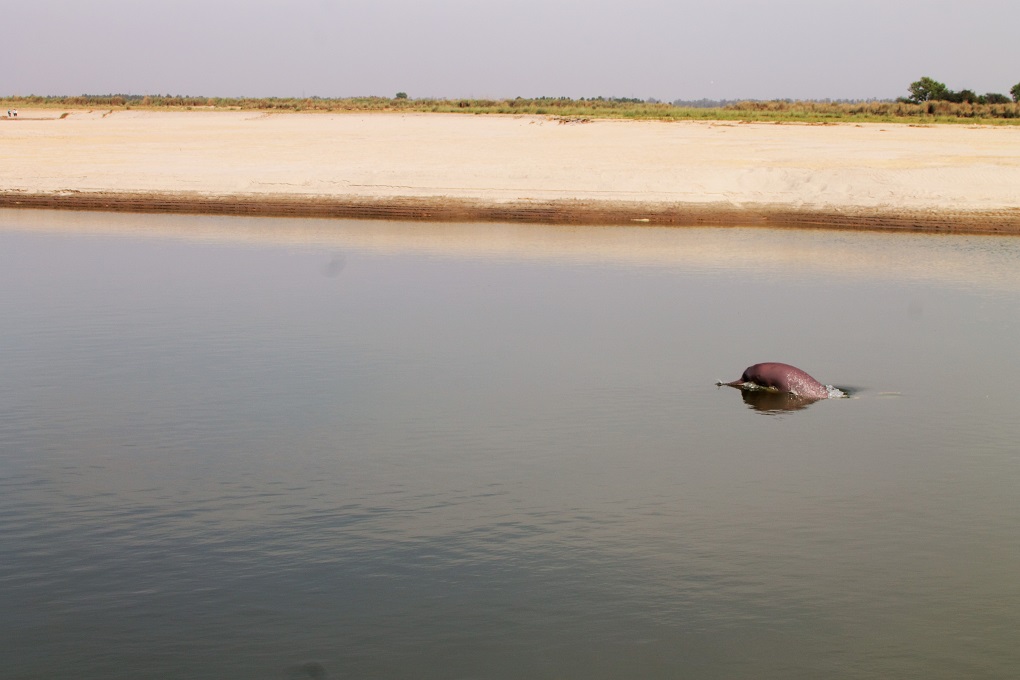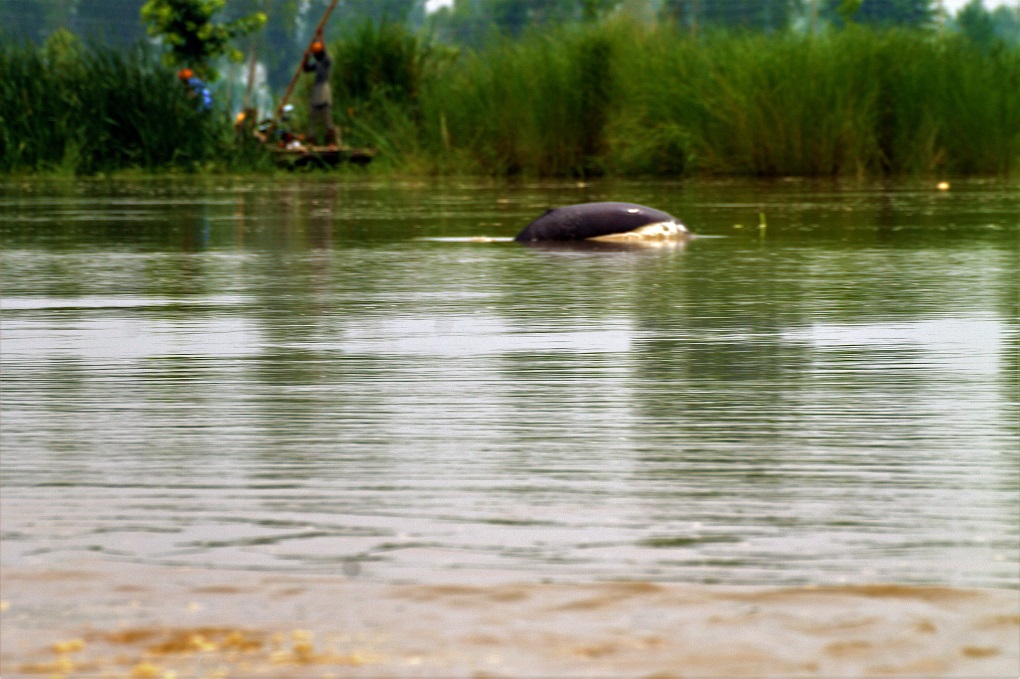May,25 2018 In the first ever survey of the Indus river dolphin in India, a number of the rare creatures were spotted, including calves

The first ever survey of the Indus river dolphin population in India has revealed that there are five to 11 of the endangered animals living in a small stretch of the Beas river in Punjab. This is the only population found in India.
Despite the tiny population, there is some good news. Researchers found a calf during a survey, which shows that the population is breeding. The presence of a young calf indicates a population that is large enough to be viable. The analysis has also shown that although the population of the species is small, its continuing presence in the Beas river above the Harike barrage for 70 years indicates that there is no decline in the number of the species on the studied stretch.

The Indus River Dolphin Survey was conducted by WWF-India, in partnership with the Department of Forests and Wildlife Preservation, Punjab, on May 3-6. This is the first organised survey done across a 185 kilometre stretch of the river, in a part designated as the Beas Conservation Reserve.
“While people still talk about Gangetic river dolphins, no one talks about the Indus river dolphins, neither at the state level nor at the national level. So this survey has helped us gain perspective. It was a concerted effort to understand the status of the population in India and the findings will help us in formulating a conservation strategy to save the species,” said Suresh Babu, the director of river basins and water policy at WWF-India.
The dolphin survey started from 52 Headworks, Talwara and ended at Harike Nooze point; 55 kilometres of river downstream of 52 Headworks was surveyed by road due to insufficient water in the Beas while the remaining 130 kilometres was surveyed using motorboats. Direct counts were conducted using the tandem boat survey method: using two boats and a team of eight observers and two data recorders.

During the survey, the first dolphin sighting included an adult female with a week-old calf and a sub-adult. The second dolphin sighting occurred eight kilometres downstream from the first and again included an adult female with a week-old calf and a sub-adult, indicating breeding populations in the river. Based on the direct counts, the final estimate of the population of Indus River Dolphins in the Indian stretch of the Beas river is said to range between five and 11.
The Indus river dolphin (Platanista gangetica minor) is a subspecies of freshwater river dolphin and is found only in the Indus river in India and Pakistan. It is listed as an endangered animal by the IUCN and is estimated to have a population of less than 2,000 individuals in Pakistan. The other subspecies of the freshwater river dolphin is the Gangetic river dolphin found in the Ganga river basin.
Like the Gangetic river dolphin, the Indus river dolphin is blind, navigating and catching its prey through echo-location. Indus river dolphins were once common across all the major tributaries of the river but are now restricted to only the upper stretch of the Beas in India. It is believed that across India and Pakistan, the range of the elusive mammal has shrunk to just one fifth of its original range.
Numerous dams, weirs and barrages that have sprung along the Indus and its tributaries have led to fragmentation of the rivers and the habitat of the dolphins, restricting them to small pockets. These structures have stopped the dolphins from moving between India and Pakistan, and there is real danger that the tiny population in India will be affected by inbreeding.

“Fragmentation of rivers is a major threat and it has affected their migratory paths. The diversion of river water has compromised their existence,” said Babu.
Fishing is also a major threat as the dolphins often get entangled in the nets. Sand mining and loss of prey base are among other threats the dolphins face.
The Department of Forests and Wildlife Preservation, Punjab and WWF-India will now be preparing an Indus River Dolphin strategy with an implementation road map to secure the habitats and conserve the endangered species. They will also study the downstream stretches of the river after monsoon to understand if the species is able to migrate downstream.
This story first appeared in www.thethirdpole.net












































